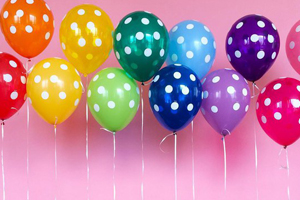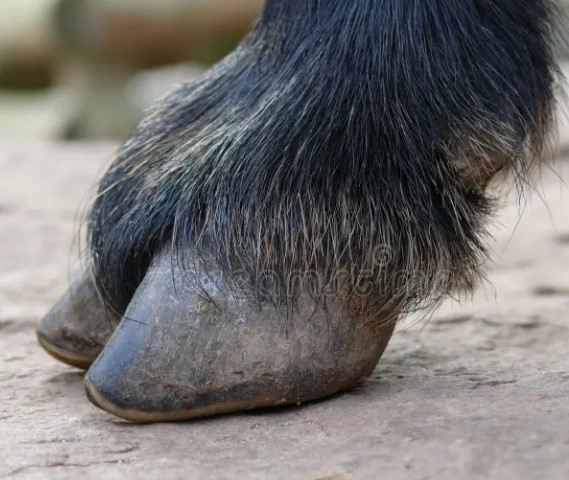Not everyone will "see" Stalin in the painting. An unusual exhibition at the National Art Museum

Photo is illustrative in nature. From open sources.
Since spring, the National Art Museum has been presenting the exhibition project "Serving the Fatherland". For the first time in 20 years, it introduces visitors to the creative developments of the studio of military artists at the Central House of Officers.
The word "studio" itself is deceptive. It can equally well mean an amateur circle of interests, and an association of professionals.
Our artists obviously wanted to create an analogue of the studio of military artists named after M. Grekov at the Russian Ministry of Defense, which turns 90 this year. Since Soviet times, it has retained the status of a state creative organization. There are only twenty studios in MINSK, and it is initially informal. Its participants openly declare their main goal - at a new turn of history to return to the values that our art professed in the era of the Soviet heyday. To the skill of depicting reality. To recognizable images of ordinary people. To plot and patriotism. The very creation of the studio of military painters is an open challenge to the artistic community of that time, which for the most part treated socially significant topics with irony.
Nikolai Opiok, HEAD of the studio of military artists at the Central House of Officers, Honored Artist of BelarusSpace and military themesThe exhibition "We Serve the Fatherland", located in the prestigious historical part of the National Art Museum, surprises and pleases, encourages recollection and thought.
The first surprise is an unfinished triptych in the museum lobby. You expect a battle scene, but see the faces of Belarusian cosmonauts.
- Marina Vasilevskaya is missing here, - says the author and head of the studio, Honored Artist of Belarus, laureate of the special prize of the President Nikolai Opiok. - Space does not seem to be related to military topics, but its exploration is a huge achievement of mankind and our country.
Surprisingly, almost all of the fifty canvases presented turned out to be deeply personal and lyrical. Ten artists - ten worlds, different in some ways, but united by a common thought, feeling, tradition, even color. Despite the fact that the oldest of the exhibited works, "Saving the Banner" by Brest resident Pavel Pogodin, was painted in 1961, and "Hot Summer of 1941" by Nikolai Opiok - in 2022. The time distance of sixty years is stylistically almost imperceptible, and the authors of the exhibition tried to emphasize this.
- We asked to provide us not just a hall, but a mezzanine, - notes Nikolai Opiok. - The space here allows you to take in the entire exhibition at a glance, perceive it as a whole and at the same time see the individuality of each artist.
Vladimir Urodnich, painter, Honored Artist of Belarus
"And you, comrade Zhukov, stay"
As you climb the stairs, your gaze immediately stops at the painting "Partisan Paths" by People's Artist of Belarus, Academician of the USSR Academy of Arts Georgy Poplavsky. At the end of the snow-white line of columns, you notice "Word to the Motherland" by Honored Artist of the Republic of Belarus , laureate of the special prize of the President Vladimir Urodnich. These canvases are like two supporting points of the exhibition: the partisan story and the oath -taking ceremony in the modern Belarusian army.
- The sketches were made from life, - says Vladimir Urodnich. - We were asked to create portraits of five Belarusians - twice Heroes of the Soviet Union. These works are also presented at the exhibition. We are children of war. I was born in 1942, Nikolai Opiok in 1935. He saw our army retreat in the summer of 1941, felt the horrors of the occupation and the joy of liberation.
The war through the eyes of a child lives on Opiok's canvases.
- We want to continue what the artists of Belarus did, defending their native land with a rifle in their hands. They created their first paintings, remembering their war roads. We are their followers, who learned about war as children, - emphasizes Opiok.
Here is "Hot Summer of 1941". The July sky, sooty with airplane exhaust fumes. Ripe rye, an old well, retreating Soviet soldiers, a bucket of water on the head, a jug of MILK and bread...
- I was six years old then. The soldiers walked for three or four days, - says Nikolai Afanasyevich. - Exhausted, dirty. I brought them a pie with milk and lard that my mother gave me. They thanked me and asked: "Is it far to Smolensk?"
War is always pain , a human tragedy.
- After liberation, we, children, were forced to look for the remains of the dead, - the artist sighs sadly. - It was terrible to see how many people died.
The famous artist dedicated his painting "Lord, Save Us" to women who survived the occupation.
- The Germans threw us out of our hut, and there were five of us with my mother, - Nikolai Afanasyevich recalls. - We lived in a dugout, then in a bathhouse. Once a week, the Nazis would drive everyone out into the street and shine a flashlight over every millimeter of our unenviable home. If they had found anything, they would have thrown us into a ditch dug in a birch grove. Jews were shot there, and the rest were forced to watch the execution. Like, this is what will happen to you if you move a finger. It is fortunate that we lived to see the victory.
Nikolai Opiok described it in his amazingly designed painting "Your Opinion, Comrade Zhukov...", dedicated to Operation Bagration. In front of us is a room in which a military council has just ended. On the table are maps, closer to the right edge is a carelessly thrown magnifying glass. And the marshal, immersed in sad thoughts, and an incomprehensible shadow on the wall.
- Once in Moscow I was lucky enough to visit an exhibition of the diaries of this outstanding commander, - says the artist. - One entry made a special impression.
On the eve of Operation Bagration, Stalin convened a meeting of senior military officials. There is not a word in the diary about what the conversation was about - only the last words of the generalissimo, the famous "And you, comrade Zhukov, stay late." And the question: yes or no? We do not know what the leader was asking, but the wrong answer could have cost the marshal his life. Not everyone will "see" Stalin in the painting.
- Only a few can guess the shadow of the generalissimo smoking a pipe, - smiles Opiok.
There are no military battles on the artist's canvases. The language of associations reigns here.
The capacious phrase "to serve the Fatherland"
Vladimir Urodnich also has such paintings. "The Call of the Cranes" ("The Time of Arrival of Wild Geese"), for example.
- My father fought in the partisan brigade "Soviet Belarus", - says the artist. - At the age of nineteen, he died in battle in the autumn of 1943. Working on this canvas, I imagined the spring before the offensive operation "Bagration": a partisan in a boat with bunches of blooming bird cherry and an unusually intoxicating air filled with a premonition of the imminent liberation of Belarus.
"On the Mogilev Direction", "Unread Letters", "In the Direction of the Main Attack" - in these paintings, the artist comprehends the fateful events on Belarusian soil.
I must say that I was pleasantly surprised by the number of paintings about modern military service. In "Special Forces" by Konstantin Pakhomchik and in "Special Forces" by Vladimir Gordeenko, "Inevitability of Retribution" by Alexander Osedovsky, you can feel the nerve of today. The painting by Nikolai Opiok "Graduates of the Minsk Suvorov Military School" stands apart. The 2007 canvas depicts a graduation ball, future officers of our army, educated, impeccably brought up, but most importantly - ready to defend their Motherland at any moment.
Is such an exhibition needed today? The question is rather rhetorical: of course, it is. And not only in a museum, but also in military units, educational institutions, where it can be shown accompanied by a good lecturer or the masters of the brush themselves, because the canvases of military artists depict the most important things that are around us, in our history and modern times, which are contained in the capacious phrase "to serve the Fatherland".
| Yulia ANDREEVA, "Belarusian Dumka" magazine. Photo by Pavel ORLOVSKY.
Read also:
The word "studio" itself is deceptive. It can equally well mean an amateur circle of interests, and an association of professionals.
Our artists obviously wanted to create an analogue of the studio of military artists named after M. Grekov at the Russian Ministry of Defense, which turns 90 this year. Since Soviet times, it has retained the status of a state creative organization. There are only twenty studios in MINSK, and it is initially informal. Its participants openly declare their main goal - at a new turn of history to return to the values that our art professed in the era of the Soviet heyday. To the skill of depicting reality. To recognizable images of ordinary people. To plot and patriotism. The very creation of the studio of military painters is an open challenge to the artistic community of that time, which for the most part treated socially significant topics with irony.
Nikolai Opiok, HEAD of the studio of military artists at the Central House of Officers, Honored Artist of BelarusSpace and military themesThe exhibition "We Serve the Fatherland", located in the prestigious historical part of the National Art Museum, surprises and pleases, encourages recollection and thought.
The first surprise is an unfinished triptych in the museum lobby. You expect a battle scene, but see the faces of Belarusian cosmonauts.
- Marina Vasilevskaya is missing here, - says the author and head of the studio, Honored Artist of Belarus, laureate of the special prize of the President Nikolai Opiok. - Space does not seem to be related to military topics, but its exploration is a huge achievement of mankind and our country.
Surprisingly, almost all of the fifty canvases presented turned out to be deeply personal and lyrical. Ten artists - ten worlds, different in some ways, but united by a common thought, feeling, tradition, even color. Despite the fact that the oldest of the exhibited works, "Saving the Banner" by Brest resident Pavel Pogodin, was painted in 1961, and "Hot Summer of 1941" by Nikolai Opiok - in 2022. The time distance of sixty years is stylistically almost imperceptible, and the authors of the exhibition tried to emphasize this.
- We asked to provide us not just a hall, but a mezzanine, - notes Nikolai Opiok. - The space here allows you to take in the entire exhibition at a glance, perceive it as a whole and at the same time see the individuality of each artist.
Vladimir Urodnich, painter, Honored Artist of Belarus
"And you, comrade Zhukov, stay"
As you climb the stairs, your gaze immediately stops at the painting "Partisan Paths" by People's Artist of Belarus, Academician of the USSR Academy of Arts Georgy Poplavsky. At the end of the snow-white line of columns, you notice "Word to the Motherland" by Honored Artist of the Republic of Belarus , laureate of the special prize of the President Vladimir Urodnich. These canvases are like two supporting points of the exhibition: the partisan story and the oath -taking ceremony in the modern Belarusian army.
- The sketches were made from life, - says Vladimir Urodnich. - We were asked to create portraits of five Belarusians - twice Heroes of the Soviet Union. These works are also presented at the exhibition. We are children of war. I was born in 1942, Nikolai Opiok in 1935. He saw our army retreat in the summer of 1941, felt the horrors of the occupation and the joy of liberation.
The war through the eyes of a child lives on Opiok's canvases.
- We want to continue what the artists of Belarus did, defending their native land with a rifle in their hands. They created their first paintings, remembering their war roads. We are their followers, who learned about war as children, - emphasizes Opiok.
Here is "Hot Summer of 1941". The July sky, sooty with airplane exhaust fumes. Ripe rye, an old well, retreating Soviet soldiers, a bucket of water on the head, a jug of MILK and bread...
- I was six years old then. The soldiers walked for three or four days, - says Nikolai Afanasyevich. - Exhausted, dirty. I brought them a pie with milk and lard that my mother gave me. They thanked me and asked: "Is it far to Smolensk?"
War is always pain , a human tragedy.
- After liberation, we, children, were forced to look for the remains of the dead, - the artist sighs sadly. - It was terrible to see how many people died.
The famous artist dedicated his painting "Lord, Save Us" to women who survived the occupation.
- The Germans threw us out of our hut, and there were five of us with my mother, - Nikolai Afanasyevich recalls. - We lived in a dugout, then in a bathhouse. Once a week, the Nazis would drive everyone out into the street and shine a flashlight over every millimeter of our unenviable home. If they had found anything, they would have thrown us into a ditch dug in a birch grove. Jews were shot there, and the rest were forced to watch the execution. Like, this is what will happen to you if you move a finger. It is fortunate that we lived to see the victory.
Nikolai Opiok described it in his amazingly designed painting "Your Opinion, Comrade Zhukov...", dedicated to Operation Bagration. In front of us is a room in which a military council has just ended. On the table are maps, closer to the right edge is a carelessly thrown magnifying glass. And the marshal, immersed in sad thoughts, and an incomprehensible shadow on the wall.
- Once in Moscow I was lucky enough to visit an exhibition of the diaries of this outstanding commander, - says the artist. - One entry made a special impression.
On the eve of Operation Bagration, Stalin convened a meeting of senior military officials. There is not a word in the diary about what the conversation was about - only the last words of the generalissimo, the famous "And you, comrade Zhukov, stay late." And the question: yes or no? We do not know what the leader was asking, but the wrong answer could have cost the marshal his life. Not everyone will "see" Stalin in the painting.
- Only a few can guess the shadow of the generalissimo smoking a pipe, - smiles Opiok.
There are no military battles on the artist's canvases. The language of associations reigns here.
The capacious phrase "to serve the Fatherland"
Vladimir Urodnich also has such paintings. "The Call of the Cranes" ("The Time of Arrival of Wild Geese"), for example.
- My father fought in the partisan brigade "Soviet Belarus", - says the artist. - At the age of nineteen, he died in battle in the autumn of 1943. Working on this canvas, I imagined the spring before the offensive operation "Bagration": a partisan in a boat with bunches of blooming bird cherry and an unusually intoxicating air filled with a premonition of the imminent liberation of Belarus.
"On the Mogilev Direction", "Unread Letters", "In the Direction of the Main Attack" - in these paintings, the artist comprehends the fateful events on Belarusian soil.
I must say that I was pleasantly surprised by the number of paintings about modern military service. In "Special Forces" by Konstantin Pakhomchik and in "Special Forces" by Vladimir Gordeenko, "Inevitability of Retribution" by Alexander Osedovsky, you can feel the nerve of today. The painting by Nikolai Opiok "Graduates of the Minsk Suvorov Military School" stands apart. The 2007 canvas depicts a graduation ball, future officers of our army, educated, impeccably brought up, but most importantly - ready to defend their Motherland at any moment.
Is such an exhibition needed today? The question is rather rhetorical: of course, it is. And not only in a museum, but also in military units, educational institutions, where it can be shown accompanied by a good lecturer or the masters of the brush themselves, because the canvases of military artists depict the most important things that are around us, in our history and modern times, which are contained in the capacious phrase "to serve the Fatherland".
| Yulia ANDREEVA, "Belarusian Dumka" magazine. Photo by Pavel ORLOVSKY.
Read also:
Read together with it:
- Как победить "осенний синдром"? Очень простые советы для хорошего самочувствияСнизилась концентрация, ощущается упадок сил и весь день клонит ко сну? Это межсезонье, которое идет в комплекте с простудами и вирусами. Как не заболеть осенью - разбираемся вместе с врачом общей практики. Время укреплять иммунитет При смене летнего сезона на осенний замедляются все природные процессы. Организм человека тоже перестраивается, поэтому требует меньше внешних раздражителей и больше с...
- Борьба с контрабандой, переориентация грузов. Как работают белорусские таможенникиНовости темы В Беларуси 20 сентября отмечают профессиональный праздник таможенники. Оформление грузов, борьба с контрабандой и незаконными схемами поставок товаров - часть их каждодневной работы. Несмотря на непростые условия, санкции и ограничения, таможня продолжает защищать экономические интересы страны. Внедряются новые технологии, улучшается инфраструктура. Вектор на востокКак рассказали в ГТ...
- Беларусь и Владимирская область проработают новые направления сотрудничества в биржевой сфереФото БУТБ 18 сентября, Минск. Беларусь и Владимирская область проработают новые направления сотрудничества в биржевой сфере. Речь об этом шла во время встречи представителей Белорусской универсальной товарной биржи с деловыми кругами Владимирской области России, сообщили БЕЛТА в пресс-службе БУТБ.Развитие электронной биржевой торговли несырьевыми товарами с высокой добавленной стоимостью, импортоз...
- The advanced farm of JSC "Gorodilovo" uses the work of scientists and rewards with a trip to the seaTopic newsHow knowledge of market conditions, achievements in genetics and modern technologies helped JSC "Gorodilovo" to become one of the best The President of Belarus expressed gratitude to agricultural workers in the MINSK region and Minsk district, as well as to the teams of six agricultural enterprises, including Gorodilovo JSC. This is not the first time the enterprise has received such a h...





























































